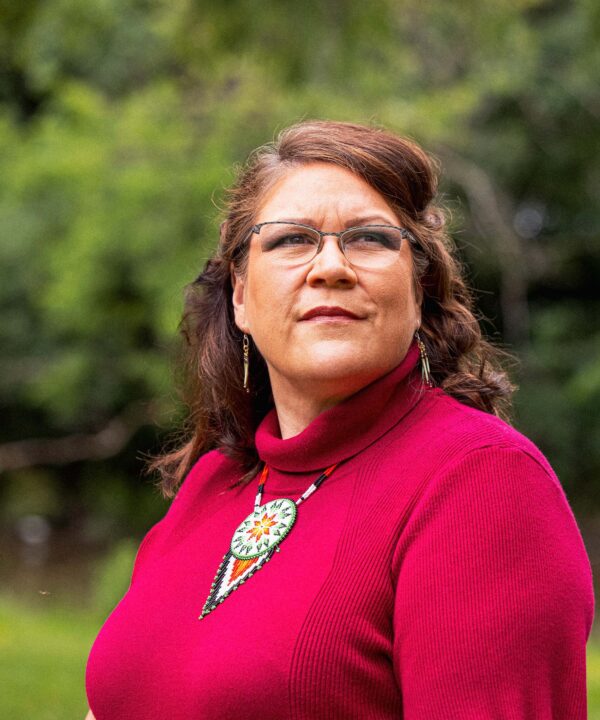As an Indigenous woman, I’m often asked for my views on the Missing and Murdered Indigenous Women and Girls Report of 2019. This is a complex question, and my response depends very much on who is asking and the context of our discussion. But most often, when I learn the story of another Indigenous woman who went missing or was murdered, I think to myself: That could have been me.
Many years ago, as a young Indigenous woman with two small children, I experienced abandonment upon the breakdown of my marriage. That’s a common enough experience for many in Canada. But what was uncommon was I became homeless due to the lack of matrimonial real property laws on-reserve. Forced out of my community in search of housing, my children and I could have disappeared forever into the night – just another set of statistics to feed a national report.
Fortunately, that was not our destiny. We survived. My daughter is finishing her degree in criminology at Western. My son earned his college diploma in welding at Lambton College. And I am delighted – and humbled – to serve as the inaugural vice-provost and associate vice-president of Indigenous Initiatives at Western. Nonetheless, I never forget how I got here. Contrary to widespread perception, the trauma Indigenous people endure is not confined to those who are marginalized; it touches all of us, to a greater or lesser degree. Structural and institutional racism in Canada – of which the Indian Residential School System is the most prominent example – has shaped the experiences of Indigenous Peoples throughout Turtle Island and across generations.
My own grandmother is just one example. She was sent hundreds of miles away to the Mohawk Institute Residential School, to be indoctrinated as a child into the colonial world. Not only was she robbed of her Anishinabek language, culture, and ways of knowing and being, she was also stripped of her dignity. Both of my parents suffered the same fate. They were forced to attend federal Indian Day School, where they, too, were subject to countless forms of abuse. My experience was comparable, enduring forced integration into a public school system that was intolerant of my culture, and where I suffered daily from the racism of low expectations and demoralizing stereotypes. And still the trauma continues. One of the most crushing days for me as an Anishinabek parent was when my beloved son cut his long hair – a symbol of Indigenous masculinity. He did so in an attempt to pass as non-Indigenous so he could escape endless taunting and racism at school and everywhere outside of our home.
I’m sharing this story because it reflects the reality of so many Indigenous people today stuck in an involuntary, intergenerational cycle of trauma and abuse. Yet, there is a solution. As the former chair of the Truth and Reconciliation Commission, Justice Murray Sinclair said, “Education is what got us into this mess, and education [or re-education] is what will get us out.” It took time and resources to implement the malign objectives of Residential Schools, and it will again take time – as well as continued public pressure – to overcome them. But that journey has begun.
It took time and resources to implement the malign objectives of Residential Schools, and it will again take time — as well as continued public pressure — to overcome them.
Here, again, I can speak from personal experience. I am commonly known as Christy R. Bressette, but my Spirit Name is Neeta No Kee Kwe (Hard Working Woman). It was given to me by my grandfather, and it was a fortuitous choice. I have indeed worked hard, going from being a homeless mother of two young children to being a vice-provost and associate vice-president at Western. And it was education (a PhD from Western) that got me here – again, fortuitous, since I belong to the Turtle clan, which holds traditional responsibilities for education.
It has been almost 30 years since I first arrived at Western. Back then, I shared many horrible stories with other students about the abuses endured by Indigenous people, and unfortunately those stories continue to be replenished today. But as I think back on family members and friends who have died too early, I know I have done my best to honour them, as well as my grandfather, who gave me my name. Since my graduation, I’ve remained faithful to my people and clan responsibilities, and I have worked hard as an educator, secure in the knowledge that it is indeed education that will get us out of this.
It’s now 2021, and I’ve come full circle. I am back on campus, leading the Office of Indigenous Initiatives with a mandate to promote the work of reconciliation through Western’s new strategic plan and its Indigenous strategic plan. Watching the thousands of people across the country who donned orange shirts in solidarity with Indigenous peoples this past Canada Day, I allowed myself a measure of optimism. I now believe we can achieve a reconciliation that is grounded in truth. And I can also believe something else equally inspiring – namely that some young Indigenous woman graduating from Western, now or in the future, will be able to look at me and think: Thirty years from now, that could be me.
